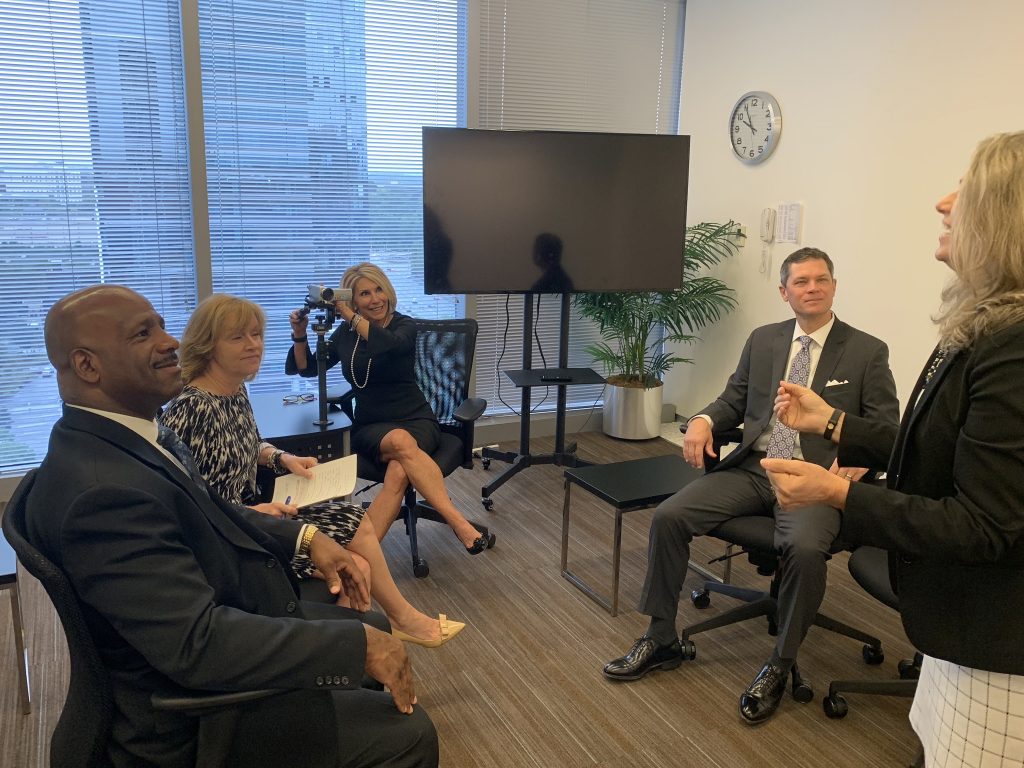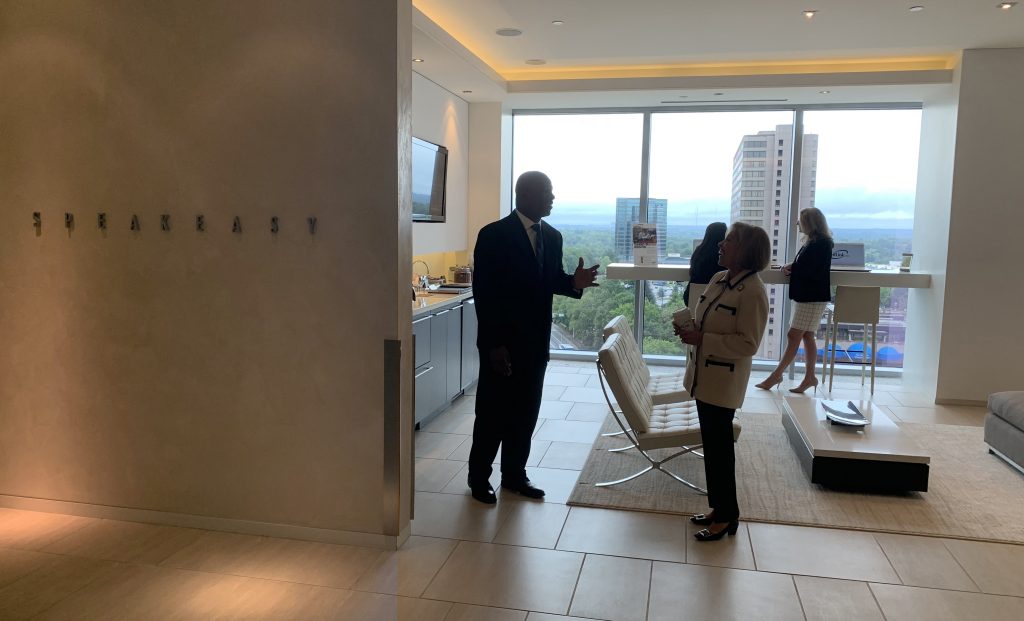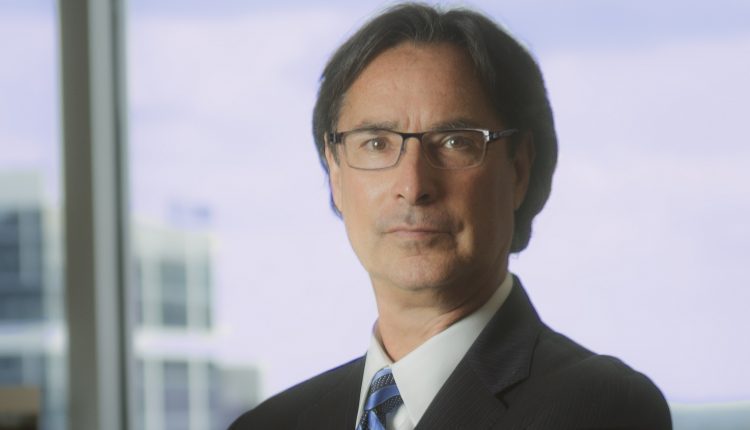Scott Weiss is the CEO and Owner of Speakeasy, Inc., a 45-year-old global communication consultancy with offices in New York, Atlanta, Chicago, San Francisco, Amsterdam, and ongoing operations in Hong Kong, Dubai, London, and Mumbai. Speakeasy works with some 350 client companies and 5,000 individuals annually who attend their communication development programs to improve both their style and delivery, as well as content planning and messaging. Their client companies comprise some of the most respected organisations in the world including EY, Accenture, Microsoft, Visa, and Coke. Scott came to Speakeasy in 1994 as Executive Vice President to help the Founder, Sandy Linver, grow and scale the company into a global enterprise. In 2004, he acquired the company from Sandy and became Owner and CEO. He currently manages key client relationships for the company, but primarily, he oversees the company’s management committee, comprised of the most senior executives responsible for various organisational functions.
What’s Speakeasy’s philosophy when providing consulting services to business leaders? Has this changed in the past four decades?
Remarkably, we have deviated very little from the original methodology and approach created by Sandy Linver in the early 70s. The methodology is essentially timeless because it focuses on developing the communication behaviour that helps individuals achieve their full potential, regardless of their business roles. As a result, we develop a wide range of communication competencies that apply to all levels of an organisation from associate level all the way to the C-Suite, regardless of the industry.
The behaviour we develop begins with “self-awareness,” which is very critical in helping individuals see themselves the way the world does without the distorted and exaggerated feedback and accolades they often hear. This “current reality” is then juxtaposed against a goal of how they really want to be seen and heard, and the goals they want to achieve as a result. The outcome is an individual who can communicate extremely effectively, critical to matrixed and collaborative organisations and critical to leadership in expressing a vision, inspiring others, and motivating various constituencies to actions required for success.
Can you tell us about the programs that Speakeasy offers?
Speakeasy offers a number of programs based on two core competencies of effective communication, what we refer to as “style and delivery”—or “how” you communicate—and “content planning and messaging,” or “what” you communicate.
Typically, we deliver “style and delivery” development in regularly scheduled programs offered globally in our office’s unique learning environments for up to ten participants in an “open enrollment” format. That means individuals who attend do not know each other which is essential to create a learning and development environment that is confidential and encourages exploration, experimentation, and discovery without any inhibitions. This is particularly important for more senior individuals from Senior Manager to the C-Suite. We offer programs for all levels, so individuals participate with peers, including a program exclusively for very senior executives typically at the C-suite level.
“Content planning and messaging” development is offered in team programs both at our offices and on-site at client offices all over the world. These programs focus on all aspects of how individuals and teams create strategic communication and specific messages targeted at a variety of listeners and audiences from customers, boardrooms, internal meetings, and external venues like trade shows and conferences. Unlike “style and delivery” development, which is very individually focused, “content planning and messaging” benefits from collaborative team development with open sharing of ideas and tactics.

What makes Speakeasy’s approach unique?
Our approach or methodology was developed by Speakeasy’s Founder, Sandy Linver, who had an extraordinary understanding of the behaviours that connect individuals through spoken communication, and its impact on business. These behaviours, which are different for everyone, is why our communication development centres on the individual, their self-awareness of their own capabilities, and their wish about the communicator they can become. Our methodology, as a result, focuses on personal impact from a style and delivery perspective, which includes authenticity, energy, comfort, and credibility. Combined with content or messaging that is driven by the needs of the listener that is relevant, precise, and sincere. Progress with both these competencies creates the kind of communication effectiveness so essential in business today both internally with teams and externally with customers, clients, the media, and a variety of other constituencies. Moreover, the process of discovery and exploration that is paramount in our development methodology is as much a personal growth experience as it is a skill development exercise.

You first came to Speakeasy as a client – what made you fall in love with the company?
My first experience at Speakeasy was a serendipitous moment. I had just recently presented at my company’s Board meeting as a young rising executive, when my CEO suggested I consider Speakeasy, given that the consequences of my communication were increasing. At the same time, I was introduced to Sandy Linver through a mutual friend who she had hired to help her develop a sales strategy for her company. On a ‘dare’ from Sandy, I decided to attend a workshop she was leading called “The Leader’s Edge,” which made my boss very happy! It was without a doubt one of the most vulnerable and extraordinary experiences of my life. Here I was, a rising executive at a public company at a very young age, suddenly in a room with seasoned executives going through a development experience that was very open, honest, and insightful. My personal discoveries shook me to my core, with a very motivational and inspiring outcome. I crossed paths with Sandy many months later and couldn’t stop thinking about my experience and the possibilities. My company was about to go through a significant merger and Sandy was looking for an individual that could help her take her company to the next level. The timing was miraculous, and I took the leap which was not without substantial personal risk. However, something was telling me I had to do it, so I did. That decision changed my life profoundly forever, and here I am, 25 years later, as passionate about Speakeasy’s purpose as I was after my first experience. I’ve always wanted to own and build a company surrounded by committed individuals focused on a purpose as well as profit. Speakeasy is that company. We are a global team incredibly focused on positive outcomes for the communication changes our clients pursue for themselves. Not only is the impact of that focus extremely gratifying, but we’re also able to sustain a profitable and growing enterprise as a result.
Were there any changes that you put in place when you bought the business in 2004?
When I took over the business, I had been apprenticing under Sandy for ten years. She made it her personal mission to ensure I was ‘ready,’ and she invested a great deal of time and energy in my ‘becoming’ over those ten years to ensure I could advance the company forward successfully. I’m very grateful for those ten years as I grew tremendously both personally and professionally. Once I took over ownership, the biggest change I made was forming a Management Committee of trusted team members who had the expertise that could help me scale the company globally. Other than that, we’ve made some changes over the past 15 years, but they have all been organisationally or technology driven. The core methodology, programs, faculty competency development, and the brand itself, hasn’t been touched in 45 years. I have made a personal commitment to protect those very important assets that have sustained our success.

You regularly speak about the importance of honesty in communication – tell us about your views on this in a nutshell.
Throughout my life and my professional career, I have always been attracted to and always admired individuals who were authentic, transparent, and honest with their leadership style through their communication. Not only because it’s inspiring and motivational, but because it created the trust that drives positive outcomes in people. I was fortunate to have had mentors along the way who emulated those values and imbedded in me the importance of modelling those behaviours. I consider myself a student on a life journey to continue to improve in all those areas, as I believe is the case for my team and the 5,000 participants who attend our programs every year. It’s a perfect alignment of vocation and passion.
How did the idea about your best-selling book ‘DARE!’ come about?
I’ve had the unique privilege over my 25 years at Speakeasy to dialogue with some of the most influential business leaders in the world. They encouraged me continuously to consider writing a book about the importance of honesty in communication in building the trust that drives success. I was so focused on building a successful business that I put the idea off, never really having the desire to write a book. After I crossed my 20th anniversary at Speakeasy and the company was doing very well, I made the decision to commit the time to write the book. I did it not for profit, but to really get my life passion into words where others could benefit. I needed it to be right, and I knew it wasn’t going to be easy, but my team and my family supported the pursuit, so I pulled the trigger and did it.
How did you manage to juggle between writing a book and running SpeakEasy?
Like everything in life, it was a time management challenge and an emotional one that surprised me. Time management wise, I committed several hours every day to write sections that resulted in chapters. I had a publisher who guided me through the process. It took a year to get it done from start to printing press. What I didn’t realise was how emotional and vulnerable of a process it was for me, realising that I was exposing some very strong feelings to an audience of strangers. It took significantly more courage than I expected, and I was certainly not expecting it to succeed the way it did, not just in copies sold, but receiving the gold medal on ethics from Axiom Book Awards—that was particularly gratifying and validating.
The behaviour we develop begins with “self-awareness,” which is very critical in helping individuals see themselves the way the world does without the distorted and exaggerated feedback and accolades they often hear.
What would be your piece of advice for successful leadership?
My advice for successful leadership is a culmination of nearly four decades of observation. Given my role and the companies we serve and the executives that lead them, I am in a unique position to continually be exposed to successful leadership.
Clearly there are several competencies that lead to successful leadership, however the one I invest the most energy in, in terms of expertise, is how effective communication competencies contribute to successful leadership.
I would summarise it this way. I have been exposed to some of the most successful and notable leaders in the world, and without exception, all of them have been extremely competent communicators. Their communication “tools” include authenticity, transparency, humility, empathy, and active listening. Combined in such a way to motivate and inspire those that they lead, to reach their full potential, with the underlying foundation built upon the power of trust.

Can you provide examples of how your clients apply the communication development they receive from Speakeasy?
In recent years, demand for our programs and services has increased even more as a result of the growing demand on organisations to communicate more effectively and more efficiently, internally and externally. As companies move from command and control structures to matrixed and collaborative teams, business success is increasingly the result of ‘team and customer connection’ through spoken communication.
Our engagements that focus on internal communication are targeted at developing key stakeholders responsible for communicating strategic messages that are function specific as well as cross-functional. For example, we work with many tech companies like Microsoft and Cisco where there is a substantial need for sales and technical engineers to communicate through to the customer. It can be complex, and it’s important that their content is easily understood and delivered with the customer in mind.
We also have internal communication engagements being driven by workforce issues all around the world where, due to shortages in available candidates to fill positions, companies are forced to promote from within, requiring massive investments in competency development among existing staff, and communication capabilities are at the top of the list. For example, we have been integrated into Accenture’s world-renowned St. Charles Learning Center as well as EY’s Global NextGen program.
We also are engaged to do internal communication development work with executives at every level, including in the C-Suite, both with respect to leadership quality as well as high consequence communication situations, like executive committee and Board meeting preparation.
Lastly, we’re engaged by many companies like Coke, which are focused on external communication for sales teams of all sizes. Companies are scaling very large and complex sales organisations that are driving external communication at every level, and communication competencies are front and centre in terms of its impact on top-line revenue production and growth.
There is no question that we’ve seen a greater focus on spoken communication in driving business results, especially given the growing importance of culture, brand, employee retention, salespeople enablement, and executive leadership. We have experienced this on virtually every continent we work in, and across all industries. Communication matters, how you come across, what you have to say, and your ability to influence, inspire, and motivate others, to drive results.
The ability to walk into a room of any size and move a listener, a group, or an audience to the destination of your choosing, may very well be the most important competency you can develop in business, regardless of your role.



